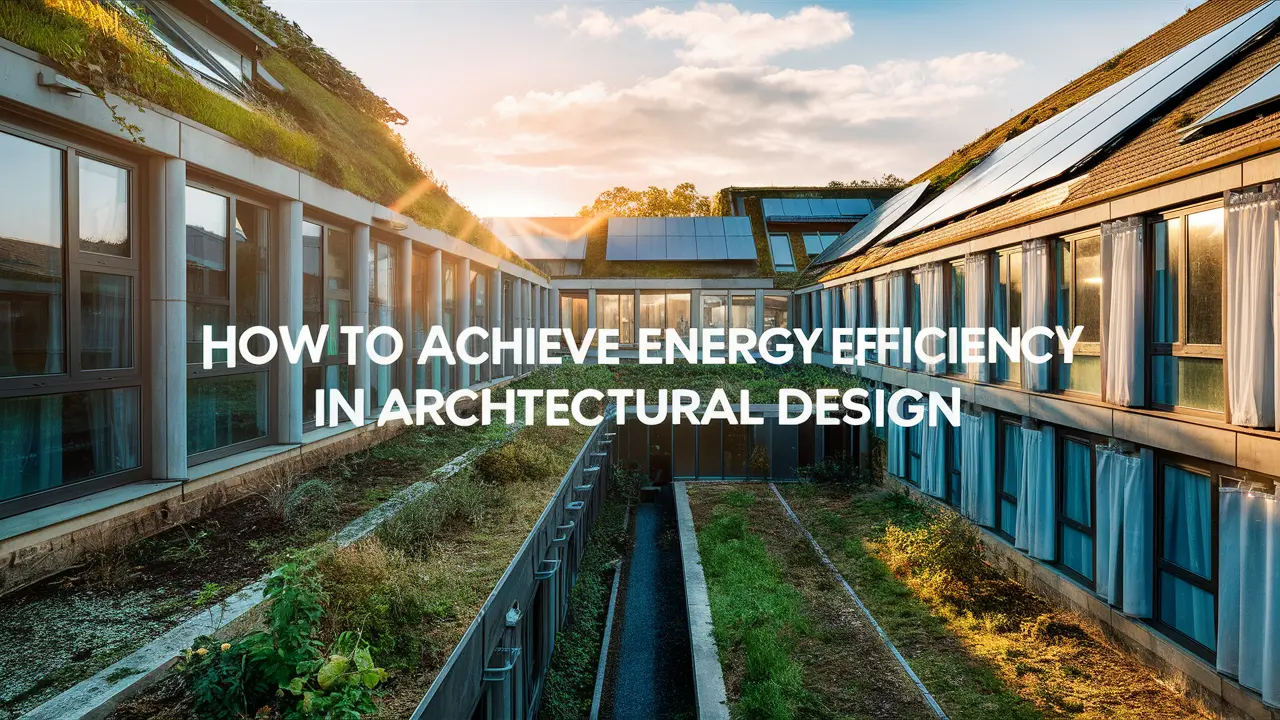Achieving energy efficiency in architectural design is crucial for reducing environmental impact and operating costs while enhancing occupant comfort. Here are several strategies to achieve energy efficiency:
-
Passive Design Principles:
- Orientation and Solar Heat Gain: Properly orienting buildings to maximize solar exposure in winter (for heating) and minimize it in summer (for cooling).
- Insulation: Effective insulation in walls, roofs, and floors to reduce heat transfer and maintain stable indoor temperatures.
- Natural Ventilation: Designing for cross-ventilation and stack effect to promote airflow and reduce reliance on mechanical cooling systems.
-
Energy-Efficient Building Envelope:
- High-Performance Windows: Using energy-efficient glazing with low U-values and low-emissivity coatings to reduce heat loss/gain.
- Thermal Mass: Incorporating materials with high thermal mass (e.g., concrete, masonry) to stabilize indoor temperatures by absorbing and releasing heat slowly.
-
Efficient HVAC Systems:
- Energy-Efficient Equipment: Installing HVAC systems with high Seasonal Energy Efficiency Ratio (SEER) ratings and Energy Star certification.
- Zoning and Controls: Using zoning systems and programmable thermostats to optimize heating and cooling based on occupancy and usage patterns.
-
Daylighting and Lighting Design:
- Maximizing Natural Light: Designing with ample daylighting to reduce the need for artificial lighting during daylight hours.
- Energy-Efficient Lighting: Using LED fixtures, which consume less energy and have longer lifespans compared to traditional incandescent or fluorescent bulbs.
-
Renewable Energy Integration:
- Solar Panels: Incorporating photovoltaic (PV) panels to generate electricity on-site, reducing reliance on grid power.
- Solar Water Heating: Utilizing solar thermal systems to heat water for domestic use or space heating.
-
Water Efficiency:
- Low-Flow Fixtures: Installing low-flow faucets, showerheads, and toilets to reduce water consumption.
- Greywater Recycling: Implementing systems to recycle and reuse greywater for non-potable purposes like irrigation or toilet flushing.
-
Building Automation and Controls:
- Building Management Systems (BMS): Implementing advanced controls to monitor and optimize energy use across HVAC, lighting, and other systems.
- Occupancy Sensors: Using sensors to automatically adjust lighting, HVAC, and other equipment based on occupancy and usage patterns.
-
Lifecycle Considerations:
- Durability and Maintenance: Designing for durability with materials and systems that require minimal maintenance and have long lifespans.
- Adaptability and Retrofitting: Designing buildings that can easily accommodate future upgrades and improvements in energy efficiency technologies.
-
Educational and Behavioral Strategies:
- Occupant Engagement: Educating building users about energy-saving practices and encouraging behaviors like turning off lights when not in use.
- Training: Providing training for building operators on optimal operation and maintenance practices to maximize energy efficiency.
By integrating these strategies early in the design process and considering the specific climate and site conditions, architects can create buildings that not only reduce energy consumption and operating costs but also enhance occupant comfort and well-being.

